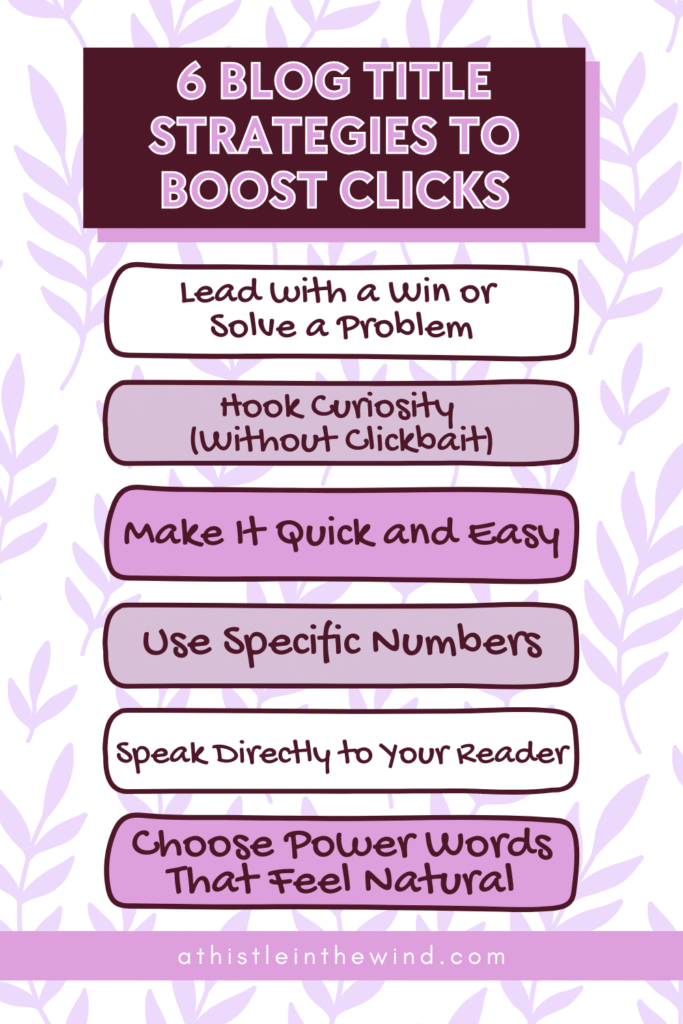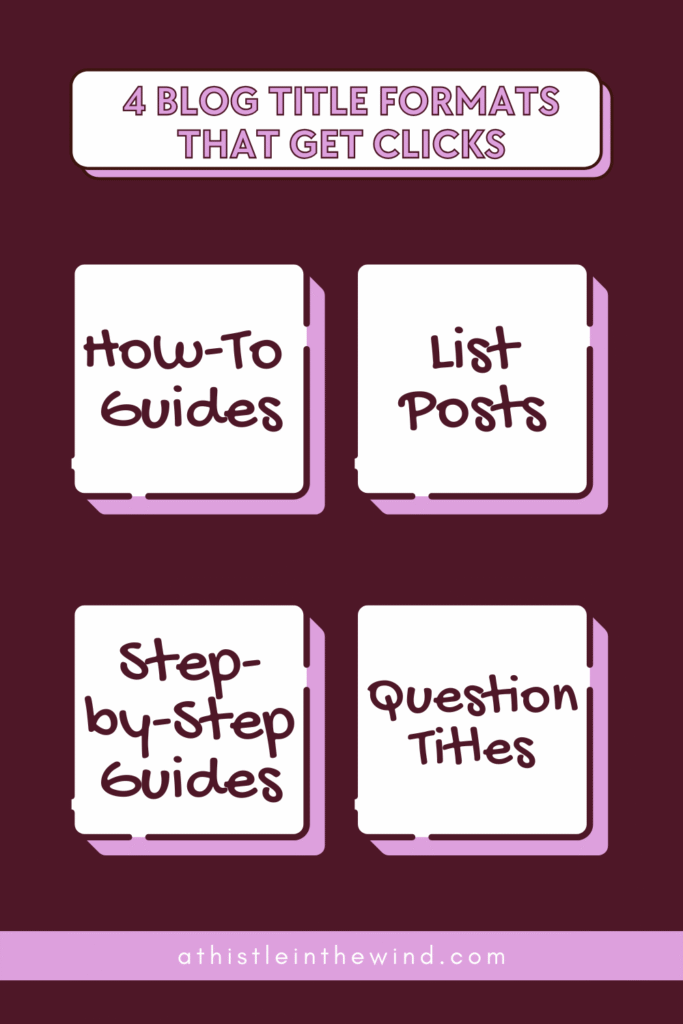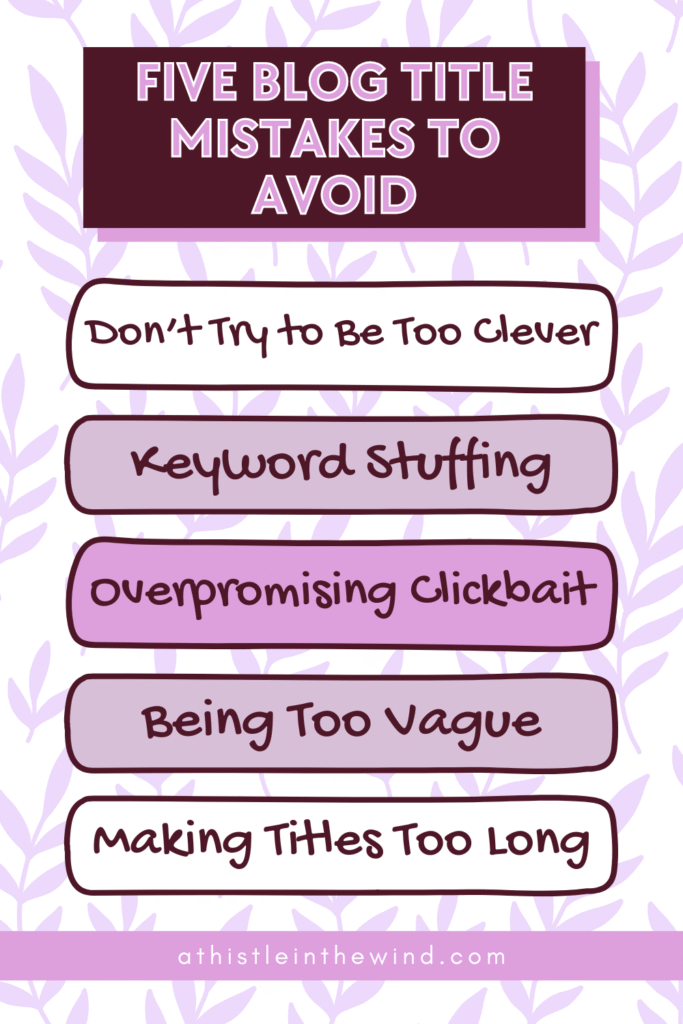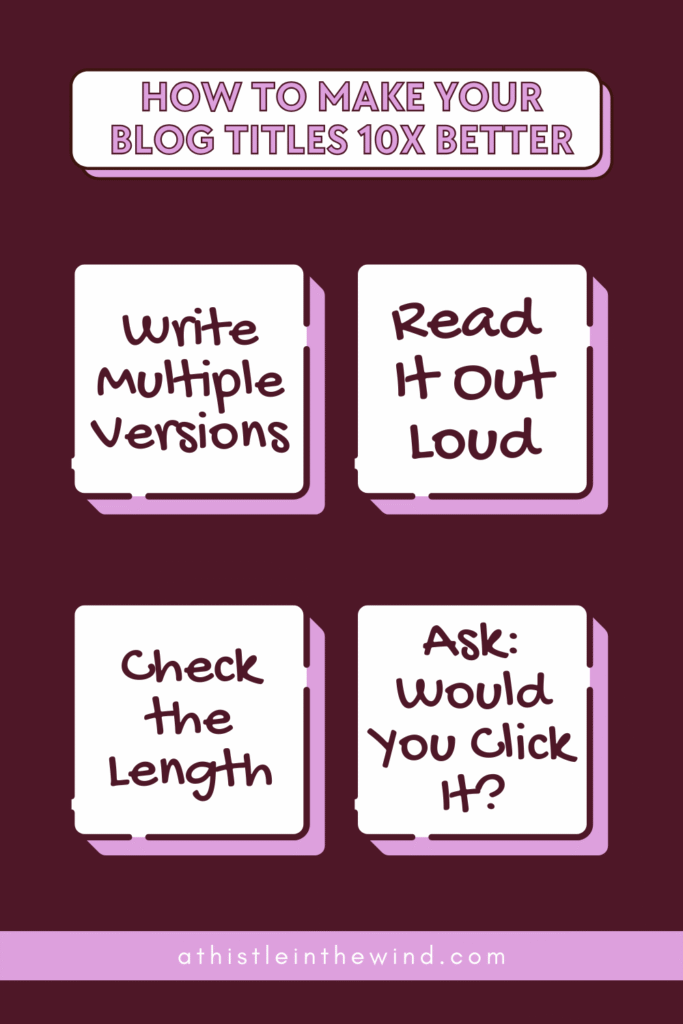How to Write Irresistible Blog Titles That’ll Get Instant Clicks

Not sure if anyone’s noticed here, but I’ve been having a bit of a hard time coming up with blog titles for a while. I mean, don’t get me wrong; I think my titles are good and immediately tell you what the blog’s about.
However, just because a blog title tells you what it’s about, doesn’t mean that your target audience is going to click on it. Seriously, you could have the most informative blog about anything: content marketing, SEO, AI ethics (I think about this a lot from a user’s perspective), or quantum field theory (don’t ask why my brain went there; it just did). Or even the next best literary critique on certain fairy fantasy writers.
But if you don’t have an interesting enough blog title, no one’s going to click on this. Do note that in this blog, I’m talking about titles from the lens of a reader clicking via social media or organic search engines. In reality, you could be published in The New Yorker, and if your piece has an uninteresting title, no one’s going to read it.
Basically, what I’m trying to say is that blog titles are very, very important. So, let’s dive into how to write great ones.
Why Your Blog Title Is Your First Impression
Think of your blog post title as a sales pitch. Before anyone reads a word of your blog, they’re judging whether it’s worth their time — and it all starts with the title.
Have you ever scrolled through your socials and suddenly stopped at a news article or blog post? You might not click immediately, but something made you pause. Most likely, it was the title.
Your blog title works the same way. It grabs attention in crowded feeds, on Google’s search results, and even in newsletters. A good title isn’t just a label — it’s a promise. It tells readers what they’ll get and why it’s worth the click.
In fact, Copyblogger‘s Brian Clark says that 8 out of 10 people will read a headline, but only 2 out of 10 will click through. If your blog title doesn’t hook them right away, the rest of your post doesn’t stand a chance.
The Psychology Behind a Click

Whenever someone comes across your blog title, their brain does something simple, yet super important: it decides if they should click — or move on. And you shouldn’t take it personally, of course. We live in an attention economy (new favourite buzzword of the year ngl).
Like I’ve said earlier, clicks don’t happen because the title describes the blog well. They happen because the title triggers something. A reaction: curiosity, urgency, a fear of missing out or even, anger (you know which publication I’m talking about here). And the thing about these emotions is that they drive action faster than logic ever will.
Most readers make the decision to click based on two things:
- What they’ll gain: Will they learn something useful, save time, or solve a problem?
- What they’ll lose if they don’t: Are they missing out on key information or making a mistake without realizing it?
A good blog title doesn’t just describe the content, it gives readers a reason to act now. It shows them what’s in it for them or what they’re risking if they don’t read on. Remember, people naturally want to close information gaps. A blog title that leaves a question hanging — without giving away everything — makes it harder for readers to scroll past without clicking.
Proven Strategies for Writing Clickable Blog Titles
Okay, so now that you know why people click, let’s get to the main point: how do you write clickable blog titles? Here are some proven strategies that will help you write blog titles that get real attention — without feeling forced or clickbaity.
1. Lead with a Promise or a Problem
Want to know the quickest way to get someone’s attention? Show them what’s in it for them — or what they might lose if they don’t read.
Promise titles highlight a clear gain:
- “How to Save $1,000 Without Giving Up Your Morning Coffee”
- “The Easy Way to Plan a Vacation Without Breaking the Bank”
Problem titles highlight something they want to avoid:
- “7 Mistakes That Are Killing Your Website Traffic”
- “Why Your Blog Isn’t Growing — and How to Fix It”
Tip: Focus on either the gain or the pain — trying to do both usually waters down the impact.
2. Tap Into Curiosity (Without Clickbait)
People hate not knowing things. A well-placed curiosity gap makes it almost impossible to scroll past. Good curiosity-based blog titles:
- Leave a question hanging
- Hint at a surprising fact
- Promise unexpected insights
Examples:
- “The One Thing Most Freelancers Forget to Do Before Pitching”
- “What No One Tells You About Growing a Blog from Scratch”
- “Are You Making This Common Mistake in Your Email Marketing?”
Tip: Don’t give away the answer in the title — but make sure you actually deliver in the blog. Curiosity works, but readers hate being tricked.
3. Make It Fast and Easy
Everyone’s busy. Blog titles that promise speed or simplicity grab attention fast. Phrases that work:
- Quick Ways
- Easy Steps
- Fast Fixes
- In [X] Minutes
Examples:
- “5 Quick Ways to Improve Your Blog Design”
- “How to Set Up a Newsletter in Under 30 Minutes”
- “Simple SEO Tweaks That Make a Big Difference”
Tip: Be realistic. Readers can smell fake promises. Don’t say “easy” if it takes hours to do.
4. Use Specific Numbers
Numbers stop the scroll. They tell readers exactly what to expect and make the content feel more digestible. Best types of numbered blog titles:
- List posts: “10 Ways to Write Blog Titles That Get Clicks”
- Steps: “7 Steps to Launch Your First Blog”
- Facts: “5 Things You Didn’t Know About SEO”
Tip: Odd numbers (like 7, 11, 13) tend to perform better because they stand out more visually.
5. Directly Speak to the Reader
Personal blog titles feel more like a conversation than a lecture. Using “you” or speaking to a specific identity pulls readers in.
Examples:
- “How You Can Improve Your Blog Traffic This Month”
- “A Beginner’s Guide to Writing Blog Titles That Work”
- “What Every New Blogger Needs to Know About Headlines”
Tip: If it sounds like something you’d actually say to someone over coffee, you’re on the right track.
6. Add Power Words — But Keep It Natural
Power words make titles pop — but there’s a fine line between powerful and spammy. Words that feel natural:
- Easy
- Proven
- Simple
- Effective
- Secret
- Quick
Examples:
- “Proven Strategies for Writing Blog Titles That Get Results”
- “Simple Tweaks to Make Your Content More Readable”
Tip: Read your title out loud. If it sounds too hyped-up or like a late-night infomercial, dial it back.

Blog Title Formats That Work (and Why)
Okay, so you’ve got the strategy down. Now let’s talk about formats: the structures that make writing blog titles way easier (and way more effective).
Some blog title formats just work. They’ve been tested across industries, audiences, and platforms, and they consistently get clicks. Here are a few you’ll want to keep in your toolkit.
1. How-To Titles
Old-school? Maybe. Effective? Absolutely.
How-to titles work because they promise readers a clear, step-by-step solution to a specific problem. They instantly tell your audience what they’ll learn — no guessing required.
Examples:
- How to Write Blog Titles That Get Instant Clicks
- How to Plan a Stress-Free Solo Trip
- How to Save More Money Without Feeling Miserable
Why it works: Clear payoff. Readers know exactly what problem you’re solving for them — and they trust that there’s a roadmap inside.
2. List Titles
You’ve seen these everywhere — and for good reason. Humans love lists. They’re easy to scan, feel manageable, and promise quick wins.
Examples:
- 10 Ways to Level Up Your Blog in 30 Days
- 7 Mistakes That Are Killing Your Website Traffic
- 5 Easy Breakfast Ideas for Busy Mornings
Why it works: Lists make information look bite-sized and achievable. Plus, numbers in titles naturally catch the eye — especially odd numbers like 7, 11, or 13.
3. Guide Titles
Sometimes your reader wants more than quick tips — they want the full blueprint. That’s where guide titles come in.
Examples:
- The Beginner’s Guide to Starting a Blog in 2025
- A Step-by-Step Guide to Writing Better Headlines
- The Complete Guide to Freelancing While Working Full-Time
Why it works: “Guide” signals that you’re offering a full, in-depth resource — not just surface-level advice. Readers love a one-stop shop for solving their problems.
4. Question Titles
Questions make people pause — because they feel incomplete until answered. They also make the reader think about themselves, which creates a personal connection.
Examples:
- Are You Making These Common Blogging Mistakes?
- What’s the Best Way to Grow Your Email List Fast?
- Is Your Website Ready for Google’s Next Update?
Why it works: Questions trigger curiosity and self-reflection. They gently push the reader to click so they can find out the answer (and see if they’re doing things right).
Bonus: Combining Formats
Some of the best blog titles mix formats for extra impact. Think: How to + List, or Question + Guide.
Examples:
- How to Grow Your Blog: 10 Strategies That Actually Work
- What Every Beginner Needs to Know: A Complete Guide to SEO
- How to Avoid the 7 Mistakes New Bloggers Make
Why it works: Combining formats makes your title feel richer and more specific — without being complicated.

Common Blog Title Mistakes to Avoid
Writing blog titles isn’t just about what you do — it’s also about what you don’t do. Even small mistakes can cost you clicks. Here are a few common slip-ups to watch out for:
1. Trying to Be Too Clever
Sure, you’re witty — but your blog title isn’t the place to get cryptic. If readers have to guess what your post is about, they’ll scroll right past.
Better: Be clear first. Save the cleverness for the intro if you must.
2. Keyword Stuffing
Yes, SEO matters. But jamming five keywords into your title makes it sound robotic — and people (and search engines) hate that.
Better: Use one main keyword naturally. If it feels forced, it probably is.
3. Overpromising (Clickbait Traps)
We get it: you want clicks. But if your blog title makes a huge promise you don’t deliver on, readers will bounce — and they won’t be back.
Better: Hype is fine. False promises? Not so much. Make sure your post lives up to the excitement your title creates.
4. Being Too Vague
“Tips for Success” could mean anything. Readers want specifics. If your title could fit a million different blog posts, it’s not doing its job.
Better: “7 Realistic Tips for Doubling Your Blog Traffic in 3 Months” — now that’s specific.
5. Making It Too Long
Long titles get cut off in search results and look messy in social shares. Most experts recommend keeping your titles under 60 characters — short enough to read at a glance, long enough to tell the story.
Better: Tight, focused, clear.

How to Polish Your Blog Titles Before You Publish
Once you’ve drafted a blog title, don’t just hit publish and hope for the best. A little fine-tuning can make the difference between a meh click-through rate and one that actually moves the needle. Here’s how to give your blog titles the final polish they deserve:
1. Write Multiple Versions
Don’t stop at the first idea. Try writing 5–10 different variations — even if they feel silly. Often, your best title is hiding a few drafts deep.
Pro tip: Change the structure, swap out power words, or flip the angle entirely.
2. Read It Out Loud
If it sounds awkward or clunky when you say it, it’s probably going to read that way too. A good blog title should roll off the tongue — short, sharp, and clear.
3. Check the Length
Keep it under 60 characters if you can. Anything longer risks getting cut off in search engine results or looking awkward in social shares.
Rule of thumb: Aim for clarity and punch — not a full sentence.
4. Ask Yourself: Would You Click It?
Take off your writer hat for a second. If you saw this title on your feed, would you stop scrolling? Would you feel like it’s worth your time? If the answer is “maybe,” it’s probably a no.

When in Doubt, Follow These Rules
So, there you have it: everything you need to know about writing irresistible blog titles that’ll get you clicks. Remember, these are more like guidelines — proven ones — but at the end of the day, it’s all about your style and your goals.
There’s no hard and fast rule here. But if you’re seeing a dip in your CTR, these strategies are a good place to start.
Want to learn more about blogging? Check out these posts:
